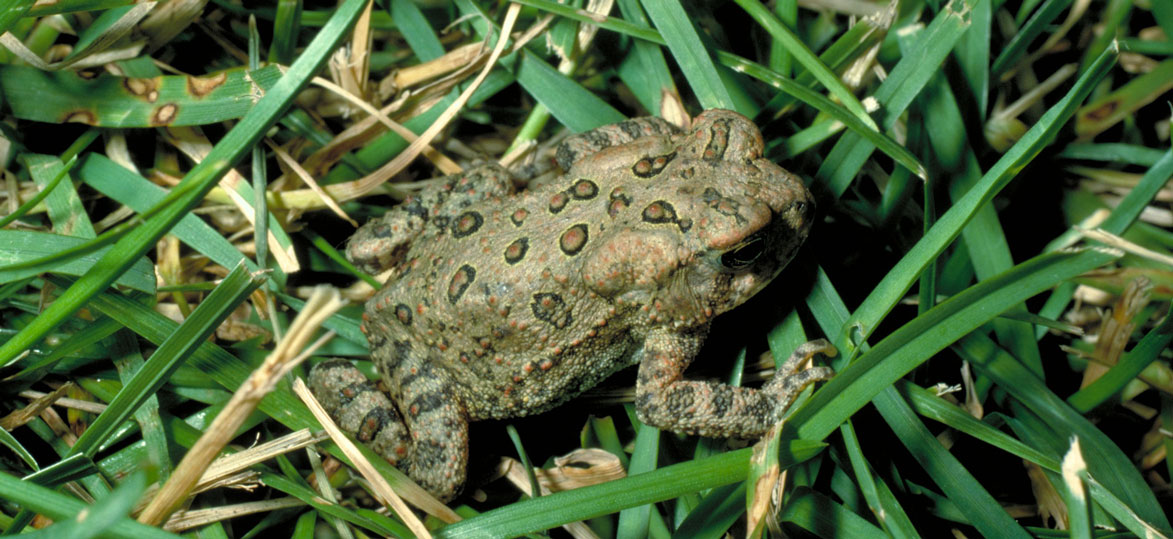 The American Toad (Anaxyrus americanus) is one of Vermont's two toad species. Toads can be distinguished from other frogs in Vermont by their dry and bumpy skin, and the long oval parotid glands on each side of their necks.
The American Toad (Anaxyrus americanus) is one of Vermont's two toad species. Toads can be distinguished from other frogs in Vermont by their dry and bumpy skin, and the long oval parotid glands on each side of their necks.
The American Toad has at least one large wart in each of the large black spots found along its back. The underside of the toad is white with black specks. Adults are 2 to 3½ inches long. The American Toad's call is a long trill that lasts up to 15 seconds.
Habitat
American toads are found throughout Vermont. They require a semi-permanent freshwater pond or pool for their early development and dense patches of vegetation, for cover and hunting grounds. They are common in gardens and agricultural fields. During daylight hours they seek cover beneath porches, under boardwalks, flat stones, boards, logs, wood piles, or other cover. With cold weather, these toads dig backwards into their summer homes or may choose another site in which to hibernate.
Reproduction
American toads lay their eggs in long strings in water. The females produce thousands of eggs that can be found from early May to mid-August.
Management
The American toad population has been mapped throughout the state, and benefits from Fish & Wildlife Department habitat conservation efforts.
Status
American toads are one of Vermont's most common amphibian species.
